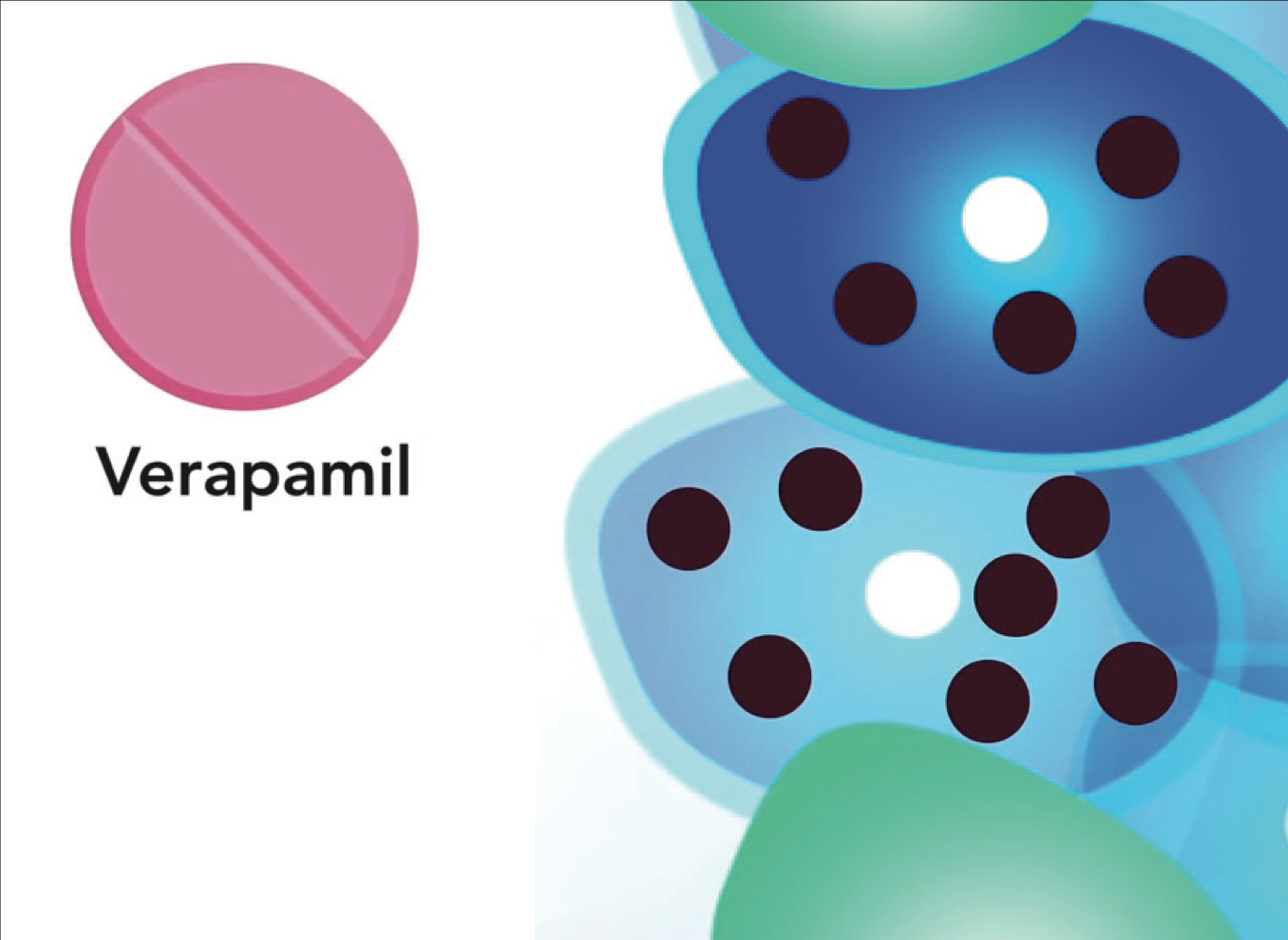Verapamil, a commonly prescribed blood pressure medication, has been shown to slow and even reverse cell damage caused by diabetes.
According to a research team at the University of Alabama (UAB), diabetic mice placed on calcium channel blocker therapy exhibited signs of complete disease reversal. Following future clinical testing, the researchers believe that verapamil could be used to effectively cure both type 1 and type 2 diabetes mellitus in humans.

| |
| Verapamil reduces the harmful protein TXNIP (black dots) in insulin-producing human islet beta cells. Reduction of TXNIP restores beta cell activity, effectively reversing diabetes. Photo: UAB Comprehensive Diabetes Center |
“We want to find new drugs—different from any current diabetes treatments—that can help halt
the growing, worldwide epidemic of diabetes and improve the lives of those affected by this disease,” says Anath Shalev, MD, director of UAB’s Comprehensive Diabetes Center and principal investigator of the verapamil clinical trial.
“Finally, we have reason to believe that we are on the right track.”
So, how could this information possibly be translated to primary eye care? Diabetes care expert, A. Paul Chous, OD, believes that calcium channel blockers, such as verapamil, could potentially play a significant role in reducing the risk and progression of diabetic retinopathy as a result of normalized blood glucose levels.
“The mouse models show that verapamil blocks an enzyme [TXNIP] that is associated with increased beta cell autoimmunity,” Dr. Chous says. “An important unanswered question is: ‘How long after initiation of beta cell autoimmunity might calcium channel blocking agents be effective?’”
In the past, researchers believed all beta cells ultimately were compromised by longstanding disease, Dr. Chous says. However, recent work has demonstrated that some beta cells survive—even in cases of long-term type 1 diabetes mellitus.
In the short term, however, “I think it is unlikely this [verapamil] is a therapy ODs will prescribe ... until long-term trials are completed,” Dr. Chous says.
Still, it’s interesting that “there is also evidence that calcium channel blocking agents may be neuroprotective in glaucoma, and this may also spill over into diabetic retinopathy,” Dr. Chous adds.
Human testing of verapamil therapy on patients with newly diagnosed type 1 diabetes mellitus is scheduled to begin at UAB in January 2015. So far, the number of volunteers for the human trial has been overwhelming, UAB says.

